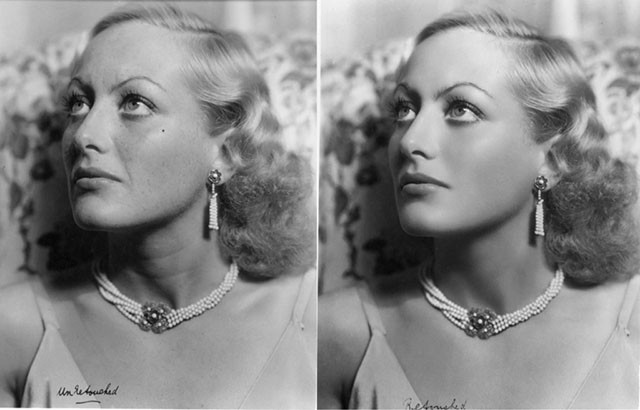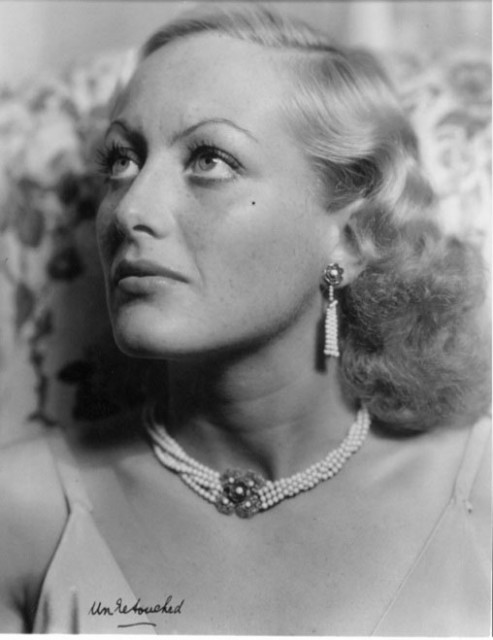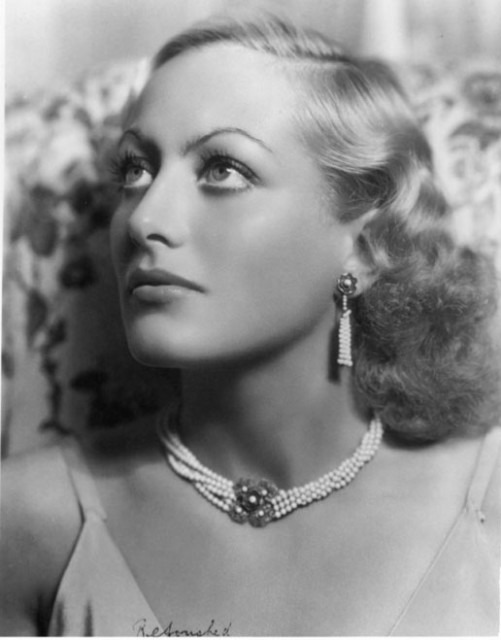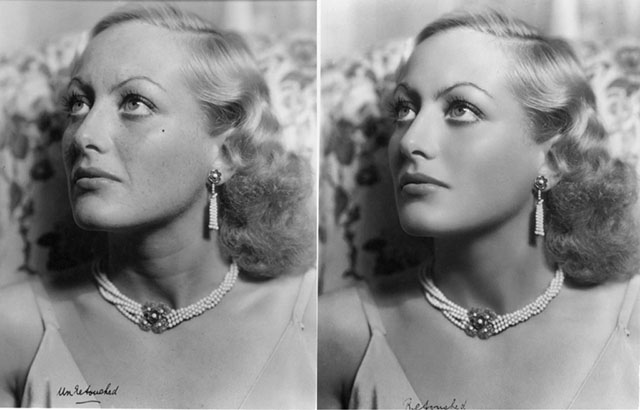The photo manipulation industry has often been accused of promoting or inciting a distorted and unrealistic image of self; most specifically in younger people.
However, we, people of the modern times, tend to act like we’ve invented Photoshop while in fact this was invented a while ago, we just made it easier.
The world of glamour photography is one specific industry which has been heavily involved with the use of photo manipulation (what many considered to be a concerning issue as many people look up to celebrities in search of embodying the ‘ideal figure’).

For example, the before and after photos above of Joan Crawford shows that beauty retouching was present in the 1930s, which kind of kills the will of us idealising the golden age Hollywood always saying: they were all perfect, a natural beauty they were and stuff like that.

The portrait photo of Joan Crawford was taken by Hollywood photographer , George Hurrell as a publicity shot for her 1931 movie Laughing Sinners. Hurrell then gave the original photo to a professional retoucher James Sharp who spent six hours working on th
e photo, smoothing the skin, removing the spots and “ironing” the wrinkles. Sharp used a device called retoucher machine, which vibrated and backlit the original photo, that allowed him to physically smooth out the negative with a pencil.
And here is the retouched portrait:

Hurrell photographed every star contracted to MGM, and his striking black-and-white images were used extensively in the marketing of these stars. Among the performers regularly photographed by him during these years were silent screen star Dorothy Jordan, as well as Myrna Loy, Robert Montgomery, Jean Harlow, Joan Crawford.
And Clark Gable, Rosalind Russell, Marion Davies, Jeanette MacDonald, Anna May Wong, Carole Lombard and Norma Shearer, who was said to have refused to allow herself to be photographed by anyone else.
If you are interested in his work you can read two books by author Mark A. Vieira Hurrell’s Hollywood Portraits and George Hurrell’s Hollywood.
Photos by Geroge Hurrell
